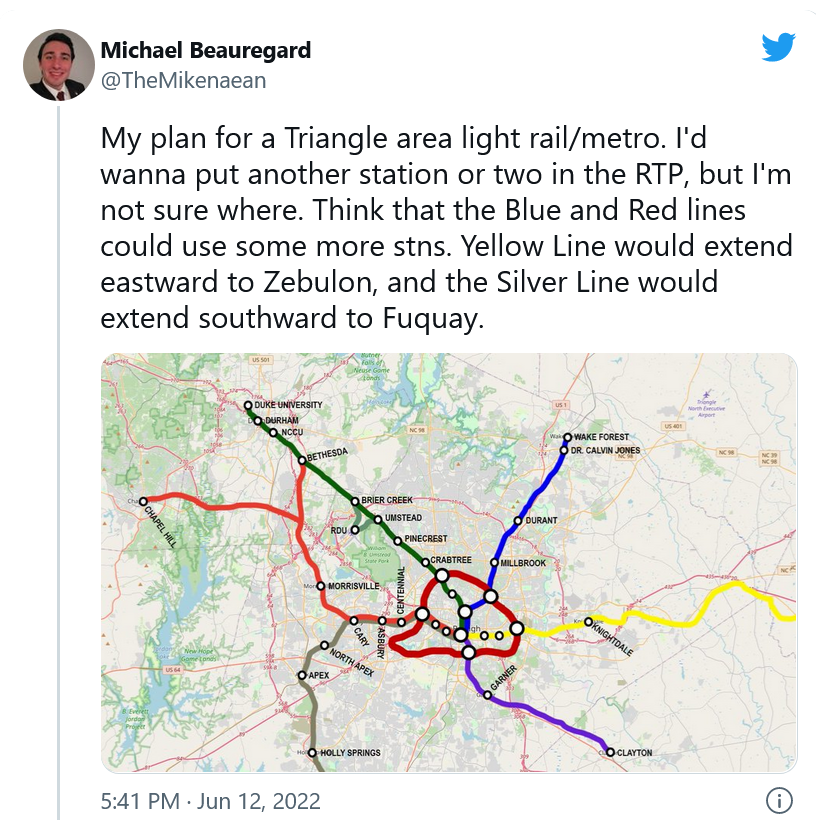Today we have a guest post from Michael Beauregard, who tweets at @TheMikenaean and runs the excellent Old North State Stories Substack newsletter, which shares stories about the history, culture, and politics of North Carolina.
Michael designed a draft fantasy map for the Triangle region — with ways to connect much of RTP. (You can find similar fantasy maps for San Diego, the United States, and all of the places named Gainesville in the United States.)
We love Michael throwing this out as a starting point for our region — and want to know: What’s missing? What would you add? What would you ideal transit map look like to connect our region as a whole and with others? Send us a drawing [email protected] and we’ll post them in the future!
My plan for a Triangle area light rail/metro. I’d wanna put another station or two in the RTP, but I’m not sure where. Think that the Blue and Red lines could use some more stns. Yellow Line would extend eastward to Zebulon, and the Silver Line would extend southward to Fuquay. pic.twitter.com/rvRofZyP9n
— Michael Beauregard (@TheMikenaean) June 12, 2022
From Michael: This is a (very) rudimentary design I came up with for a potential rapid transit system in the Raleigh region. The system would feature lines emanating northwest, northeast, east, southeast, and west from downtown, bringing together the Oak City with its suburbs and the nearby cities of Durham and Chapel Hill.
An additional ring line would tie together the lines via what is currently 440. The system largely uses existing rail lines, though it would require new rail construction between the RTP and Chapel Hill, through southeast Raleigh, and along Glenwood Avenue and Capital Boulevard.
Respondents to a Reddit post and a Twitter thread showing off my design did point out some deficiencies. There are too few stops in the RTP, the traditionally lower-income/Black southeast and east are underserved, and some pointed out that the Raleigh region is potentially too sprawly for this type of project. It should be pointed out, however, this is what parts of the New York subway system looked like when it was first built.

